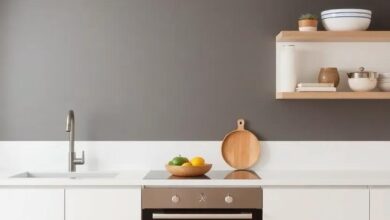Revamping Culinary Spaces: The Evolution and Essentials of the Modern Industrial Kitchen
In the heart of a bustling city or the quite charm of a suburban neighborhood, the culinary landscape is undergoing a remarkable change. Welcome to the era of the modern industrial kitchen—a space that seamlessly marries functionality with aesthetic appeal. Once confined to the shadows of professional establishments, such kitchens now captivate home cooks, aspiring chefs, and industry veterans alike with their innovative designs and practical layouts. In this article, we’ll explore the evolution of these culinary centers, tracing their journey from utilitarian beginnings to the sleek, multifunctional hubs they are today. We’ll delve into the essential elements that define a contemporary industrial kitchen, revealing the tools, technologies, and trends that empower creativity and efficiency. Join us as we uncover how these culinary spaces are not just places for cooking, but vibrant environments that inspire gastronomic artistry and foster community.
Revitalizing the Culinary Experience With Open-Concept Designs
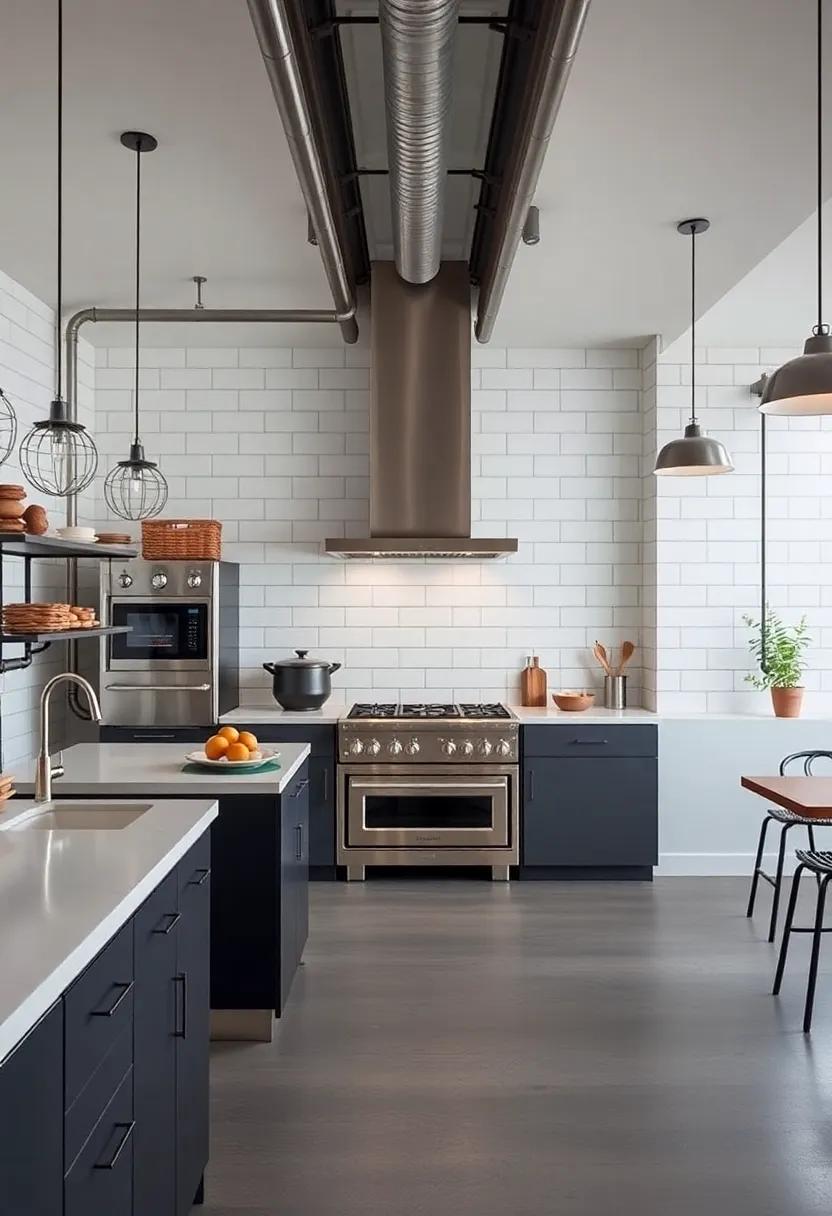
In today’s culinary landscape, open-concept designs are transforming kitchens into vibrant spaces where functionality meets aesthetics. by removing barriers, chefs and diners engage in a dynamic culinary experience that enhances not just the food but the entire atmosphere. This layout encourages interaction, allowing the kitchen staff to showcase their culinary artistry while enabling diners to appreciate the craftsmanship behind each dish. Key benefits of this design include:
- Enhanced social interaction, creating a more communal eating experience.
- Improved workflow efficiency as chefs can easily communicate and access what they need.
- Increased natural light, making the space feel more inviting and stimulating.
Moreover, the fusion of modern aesthetics with industrial elements creates an inspiring backdrop for any culinary venture. Materials such as stainless steel, reclaimed woods, and exposed piping invite both chefs and patrons to embrace a raw yet refined ambiance. When designing such spaces, consider a balance between open areas and designated zones that reflect the nuances of the kitchen’s operation. A great starting point is to categorize essential elements like:
| Zone | Functionality |
|---|---|
| Prep Area | Allows for ample workspace to prepare ingredients efficiently. |
| Cooking Station | Central point for the culinary team to create dishes. |
| Service Counter | Facilitates rapid access to meals for both staff and guests. |
Sustainable Materials Shaping the Future of Kitchen Construction
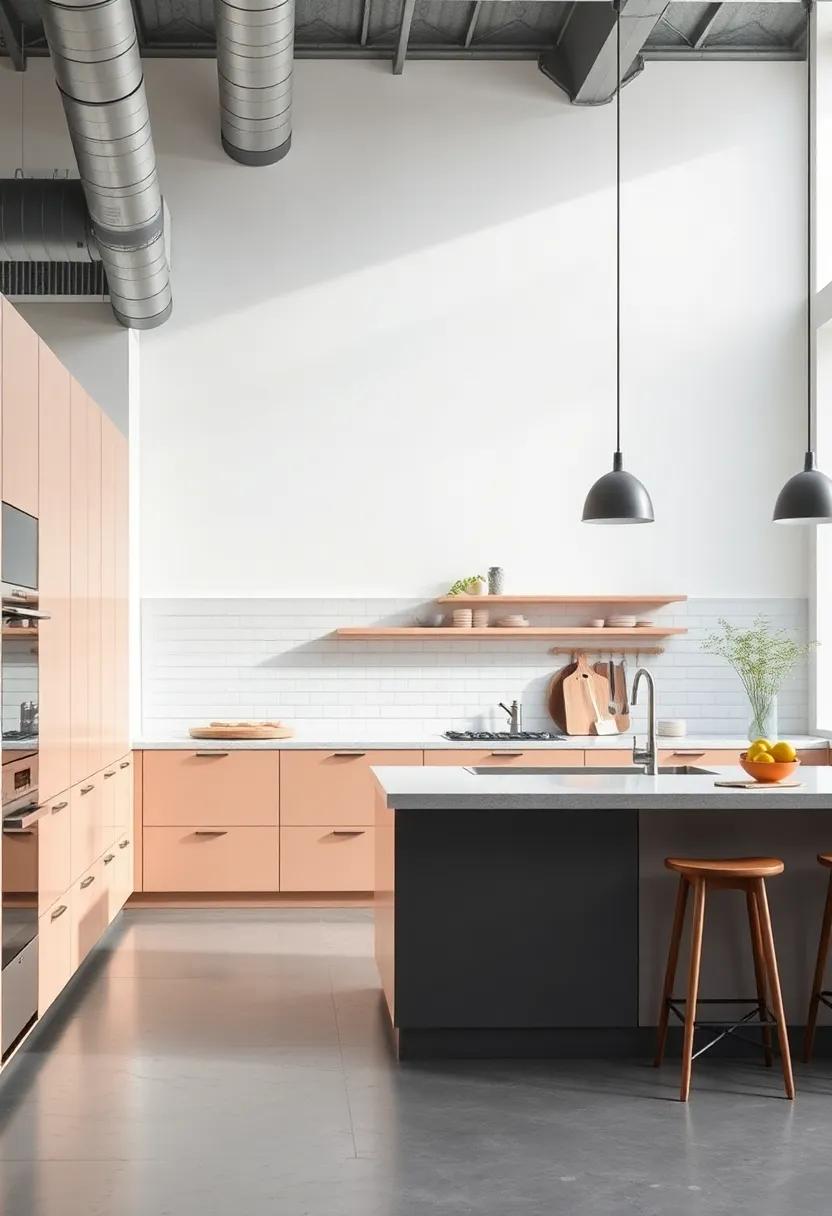
As culinary spaces evolve, the integration of sustainable materials has become paramount in kitchen construction. These eco-friendly alternatives not only reduce the environmental footprint but also enhance the aesthetic appeal and functionality of modern kitchens.Among the materials gaining popularity are:
- Bamboo: Fast-growing and renewable, bamboo is perfect for cabinetry and countertops.
- Cork: Naturally harvested, cork provides excellent insulation and is resistant to moisture.
- Recycled Metal: Utilizing scrap steel for appliances and fixtures contributes to a circular economy.
- Reclaimed Wood: Salvaged timber adds character and history, ensuring no trees are cut down.
in addition to aesthetic and environmental advantages, sustainable materials often come with enhanced durability and ease of maintenance.The following table highlights some key properties of these materials:
| Material | Durability | Maintenance | Environmental Impact |
|---|---|---|---|
| Bamboo | High | Low | Very Low |
| Cork | Moderate | Low | Low |
| Recycled Metal | High | moderate | Very Low |
| Reclaimed Wood | high | Moderate | Low |
By adopting these materials,kitchen designers and culinary professionals are not only crafting gorgeous spaces but are also contributing to a sustainable future. This commitment to the planet resonates with consumers, making eco-conscious choices more appealing and accessible.
Smart Technology Integration in the Modern Culinary Workspace
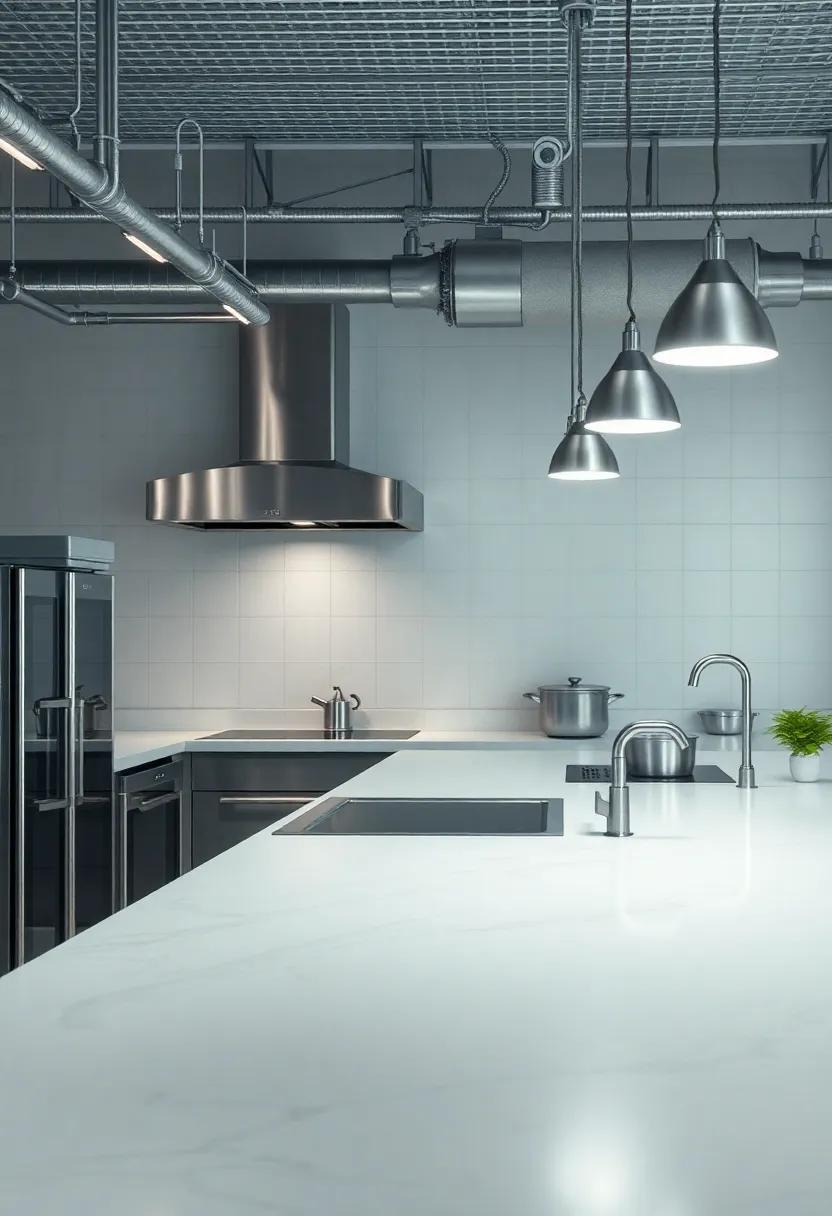
In the rapidly evolving landscape of culinary arts, the integration of smart technology has transformed how kitchens operate, maximizing efficiency and creativity. From intuitive cooking appliances to sophisticated inventory management systems, modern culinary spaces are becoming more interconnected and responsive. For instance, kitchen equipment designed with IoT capabilities enables chefs to monitor cooking processes remotely, adjusting temperatures and settings through smartphone apps. This not only streamlines workflow but also minimizes the risk of errors, elevating the quality of culinary creations. Key aspects of smart technology in culinary settings include:
- Smart Ovens and Stoves: Precision cooking through mobile connectivity.
- Inventory Management Software: real-time tracking of ingredients to reduce waste.
- Automated Dishwashers: Efficient cleaning cycles for enhanced hygiene.
- Smart Refrigeration: Temperature alerts to prevent spoilage.
Moreover, the modern culinary workspace is now harnessing data analytics to foster informed decision-making.By analyzing customer preferences and inventory usage, chefs and restaurant managers can tailor their menus and purchasing strategies to better align with demand. This data-driven approach not only enhances customer satisfaction but also contributes to a sustainable business model. A simple comparison of traditional versus modern inventory techniques illustrates the benefits:
| Aspect | Traditional Method | Modern Smart Technology |
|---|---|---|
| Monitoring Stock | Manual counts | Automated alerts |
| Menu Adaptability | Static menus | Dynamic based on data insights |
| Waste Reduction | Occasional analysis | Real-time tracking |
The Role of Ergonomics in enhancing Kitchen Efficiency and Safety
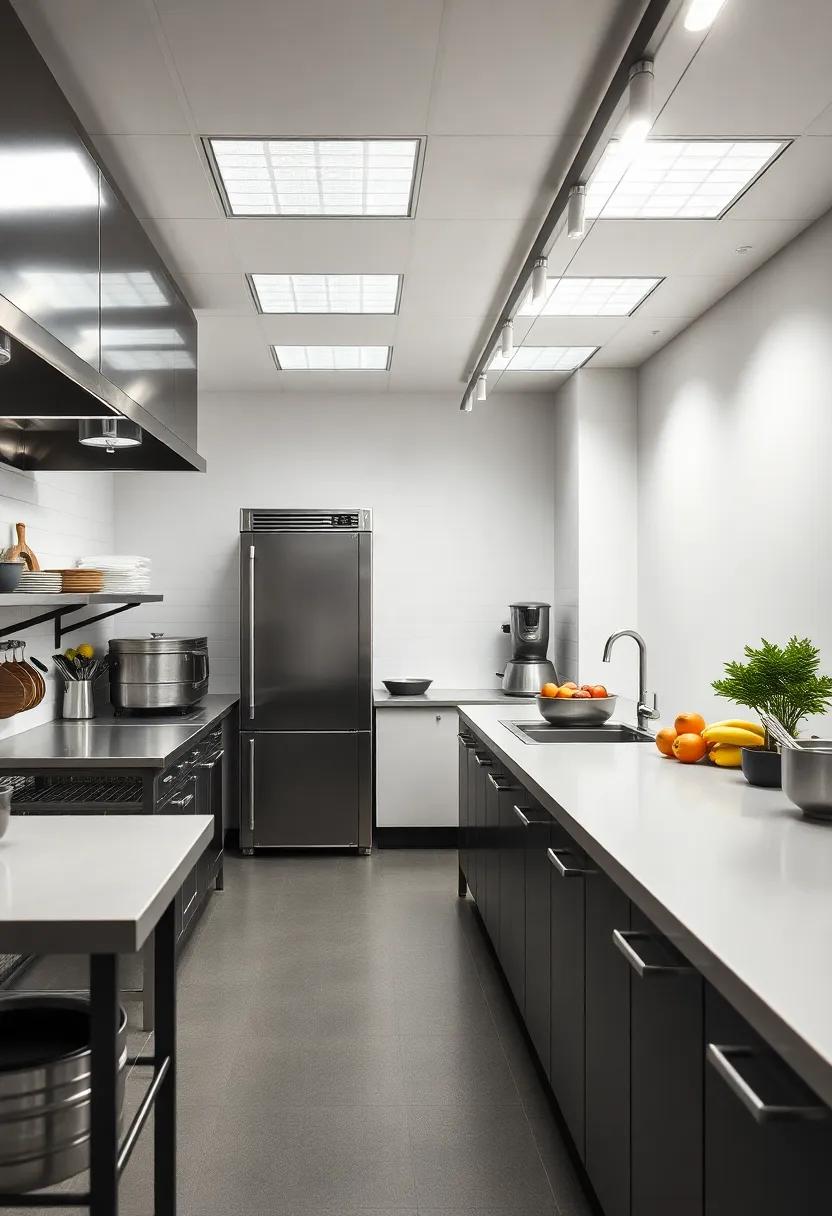
In an industrial kitchen, where speed and precision are paramount, the integration of ergonomic principles can significantly impact both efficiency and safety. By designing workspaces that accommodate the natural movements and postures of chefs and kitchen staff, tasks can be completed more swiftly with reduced physical strain. Considerations such as optimal counter heights, strategically placed equipment, and accessible storage can led to smoother workflows. As a notable example:
- Adjustable Countertops: Allowing chefs to work at comfortable heights can minimize fatigue.
- Rounded Edges on Counters: Reducing the risk of injuries and bumps during fast-paced cooking.
- Properly Positioned Tools: Keeping frequently used items within reach cuts down on excessive bending and stretching.
Moreover, the emphasis on ergonomics goes hand in hand with fostering a safer kitchen environment. By decreasing the likelihood of accidents, such approaches enhance overall productivity. Implementing features such as:
- Non-Slip Flooring: Preventing slips and falls.
- Organized Workstations: Ensuring that everything is in its designated place reduces clutter and confusion.
- Training in Proper Lifting Techniques: Minimizing strain-related injuries when handling heavy items.
| Ergonomic Feature | Benefit |
|---|---|
| Adjustable Shelving | Customizable for individual heights and preferences. |
| Ergonomic Knives | Designed to reduce hand strain and improve grip. |
| Task Lighting | Enhances visibility and reduces eye strain. |
Inspiring Culinary Creativity through Flexible Space Planning
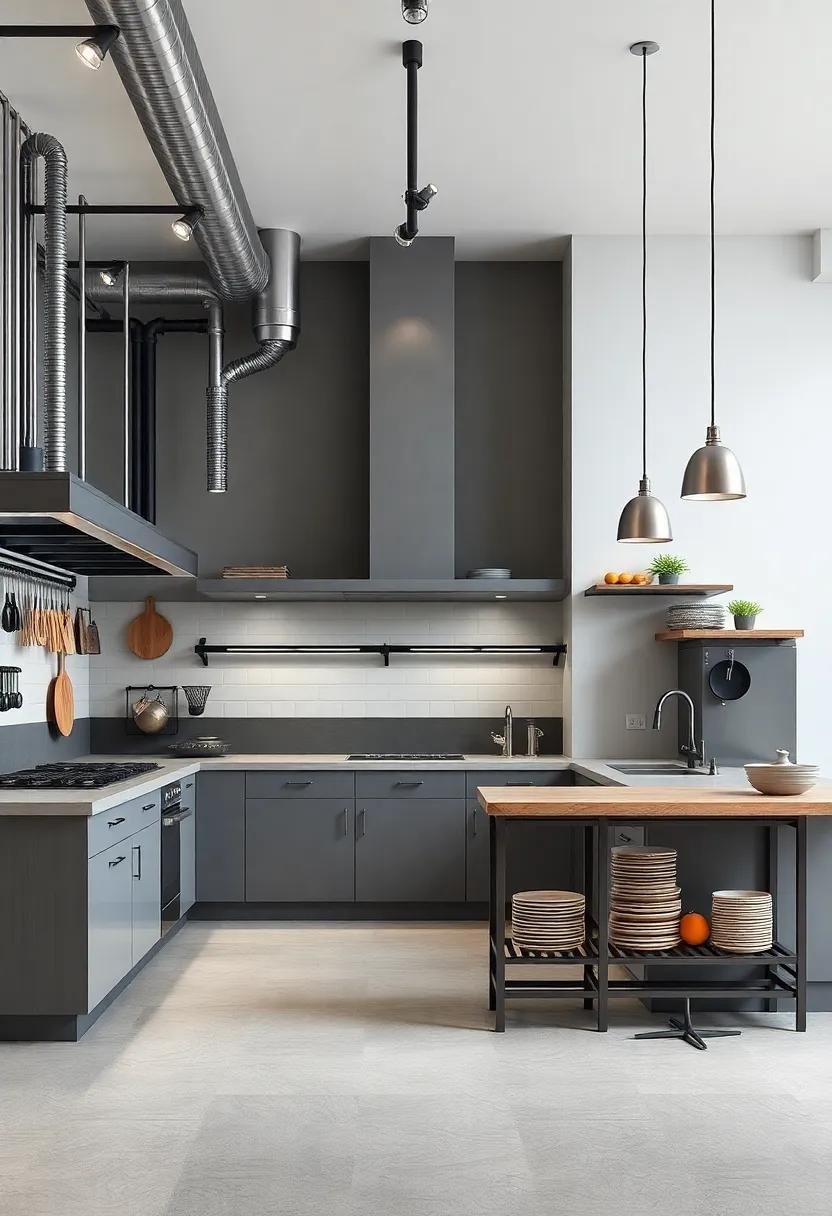
The modern culinary environment thrives on adaptability, allowing chefs to express their creativity without limitations. Flexible space planning transforms traditional kitchens into dynamic areas that foster experimentation and innovation.By incorporating movable countertops, adjustable shelving, and modular equipment, culinary professionals can easily reconfigure their working spaces to suit different culinary projects. This encourages collaboration, where teams can share ideas and techniques in an open atmosphere, ultimately enhancing the quality of their culinary creations.Moreover, incorporating technology such as smart appliances and digital inventory systems streamlines the workflow, allowing for a seamless blend of artistry and efficiency.
Visual appeal and practical functionality go hand in hand in a well-planned kitchen. Aesthetic components, like vibrant color schemes, innovative lighting options, and spacious communal dining areas, inspire creativity while providing a welcoming environment. Implementing zones within the kitchen for specific tasks, such as prep, cooking, and plating, can improve focus and reduce congestion. For a comprehensive view of essential elements, the following table highlights features that can elevate any modern kitchen design:
| Feature | Description |
|---|---|
| Flexible layout | Modular units that adapt to various cooking styles. |
| Smart Technology | Integration of iot devices for enhanced efficiency. |
| collaborative Areas | Spaces designed for teamwork and innovation. |
| Visual Dynamics | Color and lighting that stimulate creativity. |
Transforming Natural light Into a vital Element of Kitchen Design
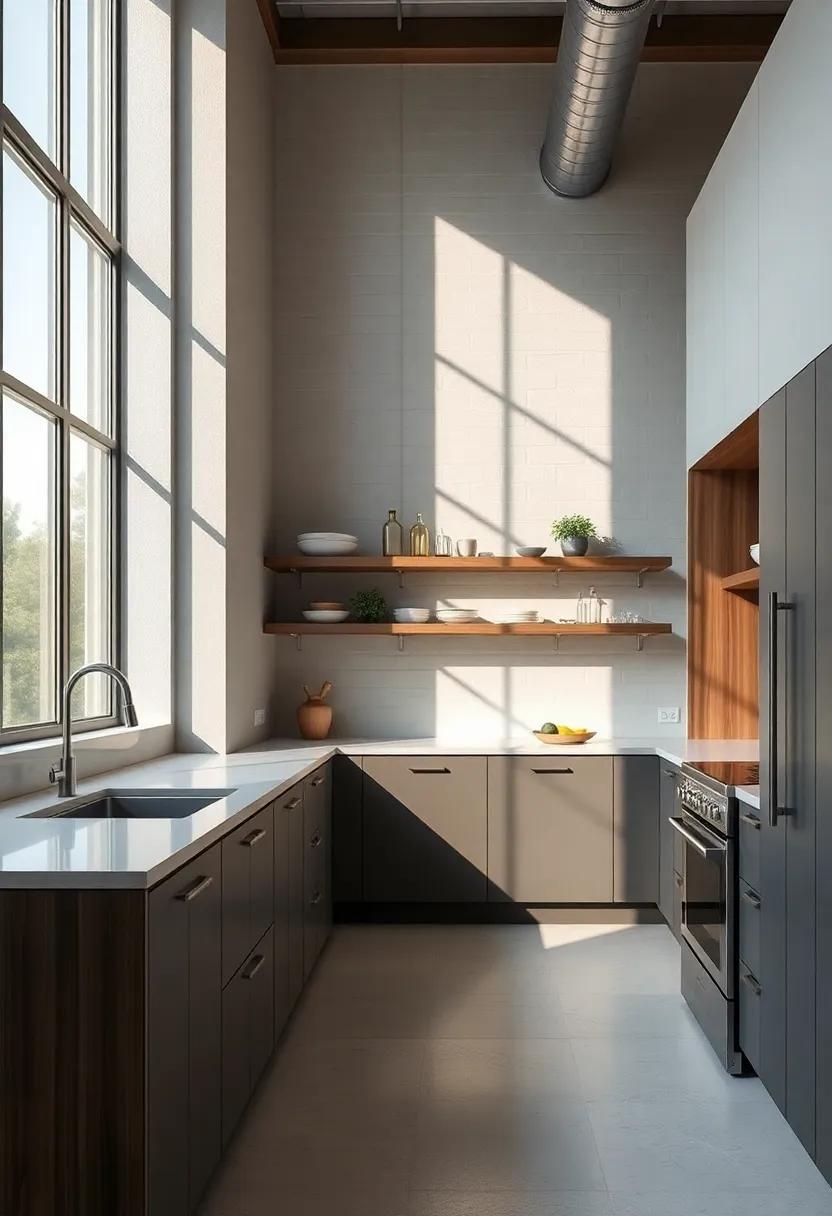
In the world of modern kitchen design, the role of natural light transcends mere aesthetics; it becomes a essential aspect of the culinary experience. Designers are embracing expansive windows, skylights, and open layouts that harmoniously blend indoor and outdoor spaces. Luminous, airy kitchens not only enhance visibility while cooking but also promote a sense of well-being. Incorporating materials that reflect light, such as glossy finishes and glass elements, further amplifies the sun’s warmth, making the kitchen feel inviting and lively.
To effectively transform your kitchen into a radiant oasis, consider the following design elements:
- Window Placement: Strategically position windows to capture the most sunlight, creating focal points that draw the eye.
- color Schemes: Use light colors on walls and cabinetry to maximize brightness, contrasting them with bold accents for depth.
- Translucent Materials: Incorporate frosted glass or open shelving that allows light to filter through while adding a touch of elegance.
- Reflective Surfaces: Embrace stainless steel, mirror-like tiles, and high-gloss countertops to bounce light around the room.
| Element | benefit |
|---|---|
| Skylights | Enhances natural light while providing privacy. |
| Open Concept Design | Creates a spacious, airy feel that facilitates social interaction. |
| Limestone Countertops | Softens light and adds a natural texture. |
Innovative Storage Solutions for Maximizing Kitchen Space
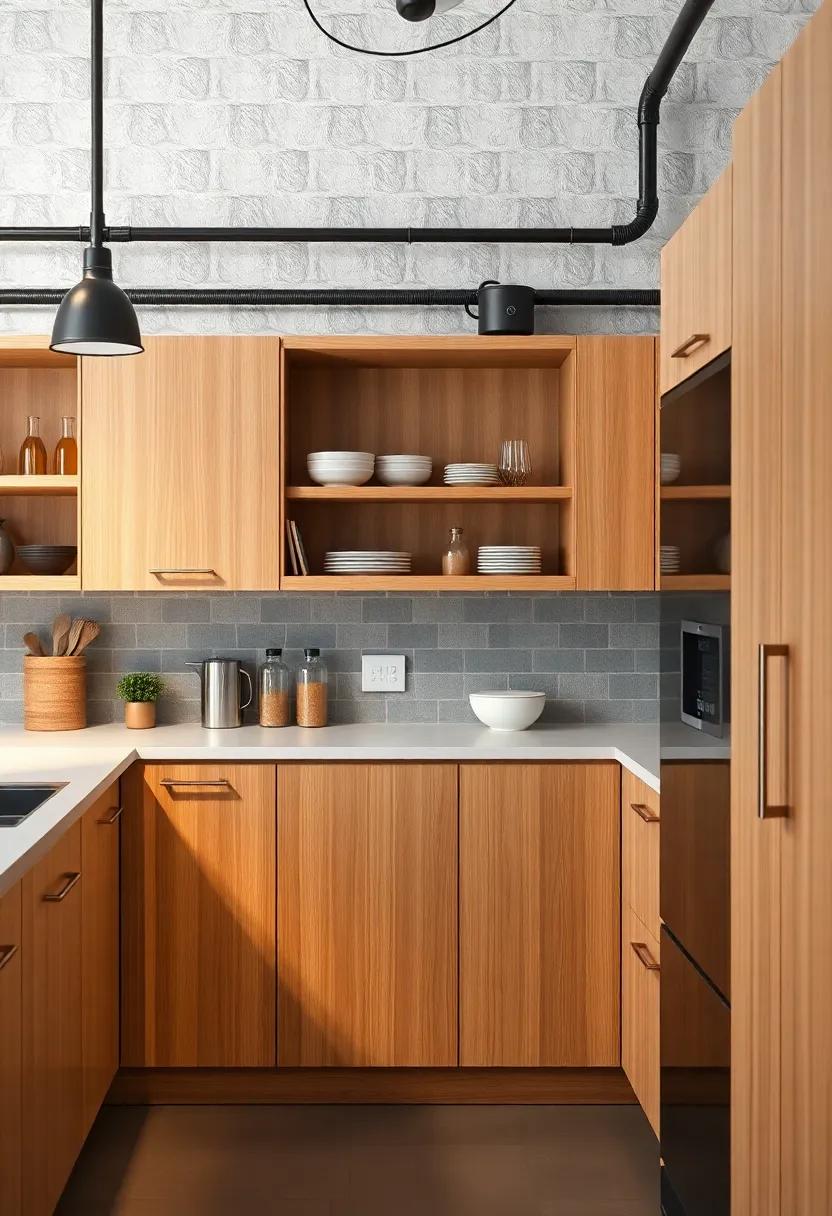
In contemporary kitchens, where every square inch counts, innovative storage solutions are paramount. Transforming cluttered countertops into organized culinary havens requires a clever blend of functionality and aesthetics. Many designers are turning to vertical storage options, capitalizing on wall space with hanging racks, shelves, and cabinets that reach upwards rather than spreading outwards. This approach not only creates an illusion of spaciousness but also keeps essential tools and ingredients within easy reach. Using modular storage units allows for personalized configurations that adapt as cooking habits evolve, marrying practicality with individual style.
Drawers have become the unsung heroes of modern kitchen organization. Drawer dividers and pull-out shelves maximize accessibility,while specialized inserts for utensils,spices,and cookware ensure everything has a designated spot. In addition to traditional cabinet layouts, integrating corner cabinets with lazy Susans or pull-out pantries provides efficient use of often-overlooked areas. As kitchens increasingly embrace open designs that serve as multifunctional spaces, these innovative storage ideas not only enhance usability but also contribute to the overall ambiance of the home.
Embracing Minimalism in Industrial Kitchen Aesthetics
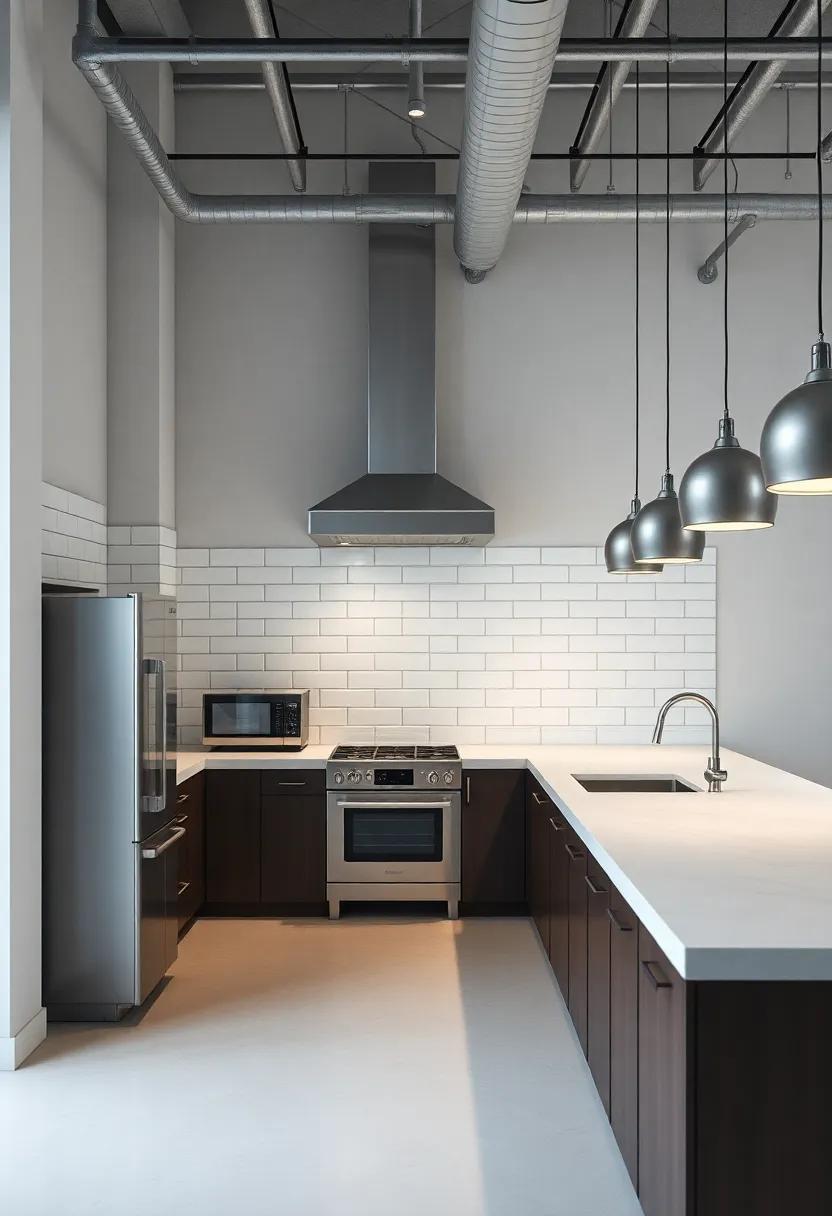
Minimalism in industrial kitchen design is not merely a trend; it is a lifestyle choice that prioritizes functionality while maintaining an aesthetic appeal. This approach strips back unneeded embellishments, allowing the raw beauty of materials such as steel, concrete, and wood to take center stage.The result is a clean, uncluttered space that inspires creativity and efficiency. key elements of minimalist industrial kitchens often include:
- Open Layouts: Promoting seamless movement and interaction.
- Neutral Color Palettes: Utilizing shades of gray, black, and white with occasional earthy tones.
- Streamlined Storage Solutions: Employing cabinets with sleek fronts and hidden handles.
- Simple Fixtures: Choosing functional lighting and appliances that serve a dual purpose.
This aesthetic not only enhances the visual appeal of the space but also encourages a more intentional way of cooking and eating.By emphasizing essential tools and materials, a minimalist approach helps cultivate a zen-like environment that fosters concentration and passion for culinary arts.When designing an industrial kitchen, consider the elimination of excess and the embrace of simplicity to create an environment where the focus shifts back to the joy of cooking. The following table outlines essential features for a minimalist industrial kitchen:
| Feature | Description |
|---|---|
| Material Palette | Steel, concrete, reclaimed wood for durable surfaces. |
| Color Scheme | Neutral tones with strategic accent colors for warmth. |
| Storage | Maximized vertical space with minimalist cabinetry. |
| Appliances | Integrated, energy-efficient options with minimalist design. |
The Impact of Color Schemes in Culinary Environment Dynamics
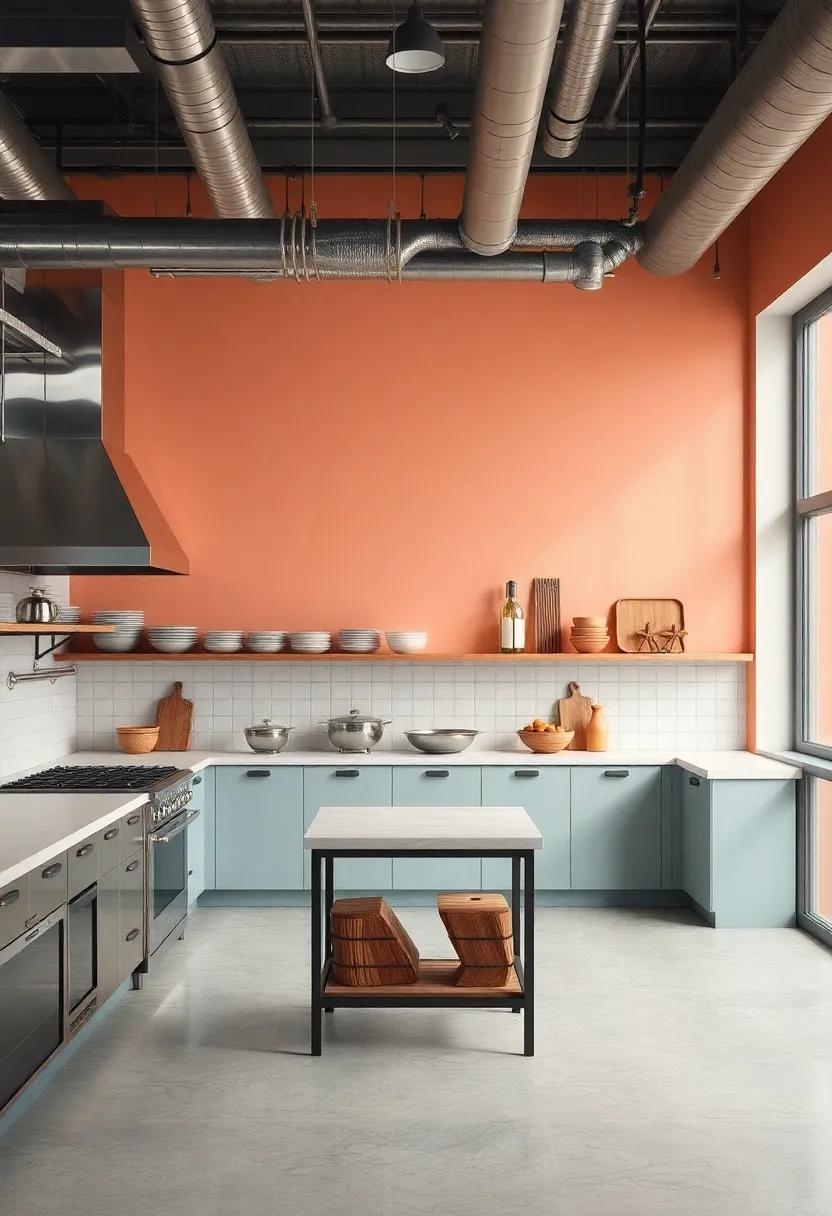
The colors that envelop a culinary space do more than beautify; they profoundly influence the cooking experience, kitchen staff morale, and even customer perception. Thoughtfully selected color schemes can evoke specific emotions and responses. as a notable example, warm tones like oranges and reds are known to stimulate appetite, making them ideal for dining areas, while cool colors like blues and greens promote tranquility and freshness, suited for prep areas. The dynamic interplay of colors can also define zones within an open kitchen, creating a psychological barrier that allows chefs to concentrate without distraction.
Incorporating color theories into culinary environments involves understanding their psychological impacts and practical implications. Here are some effective strategies to enhance the atmosphere:
- Accent Walls: A bold color can serve as a statement piece, enriching focal areas.
- Lighting Adjustments: Techniques like using warm lighting with cooler colors can balance the ambiance.
- Color Coordination: Uniformity in kitchen utensils and decor can create a cohesive, professional look.
| Color | Emotion/Energy | usage in Culinary Spaces |
|---|---|---|
| Red | Excitement | Dining areas for increased appetite |
| Blue | Calmness | Prep areas for focus and tranquility |
| Yellow | Happiness | Common areas to encourage social interaction |
Creating Zones for Specialized Cooking Techniques
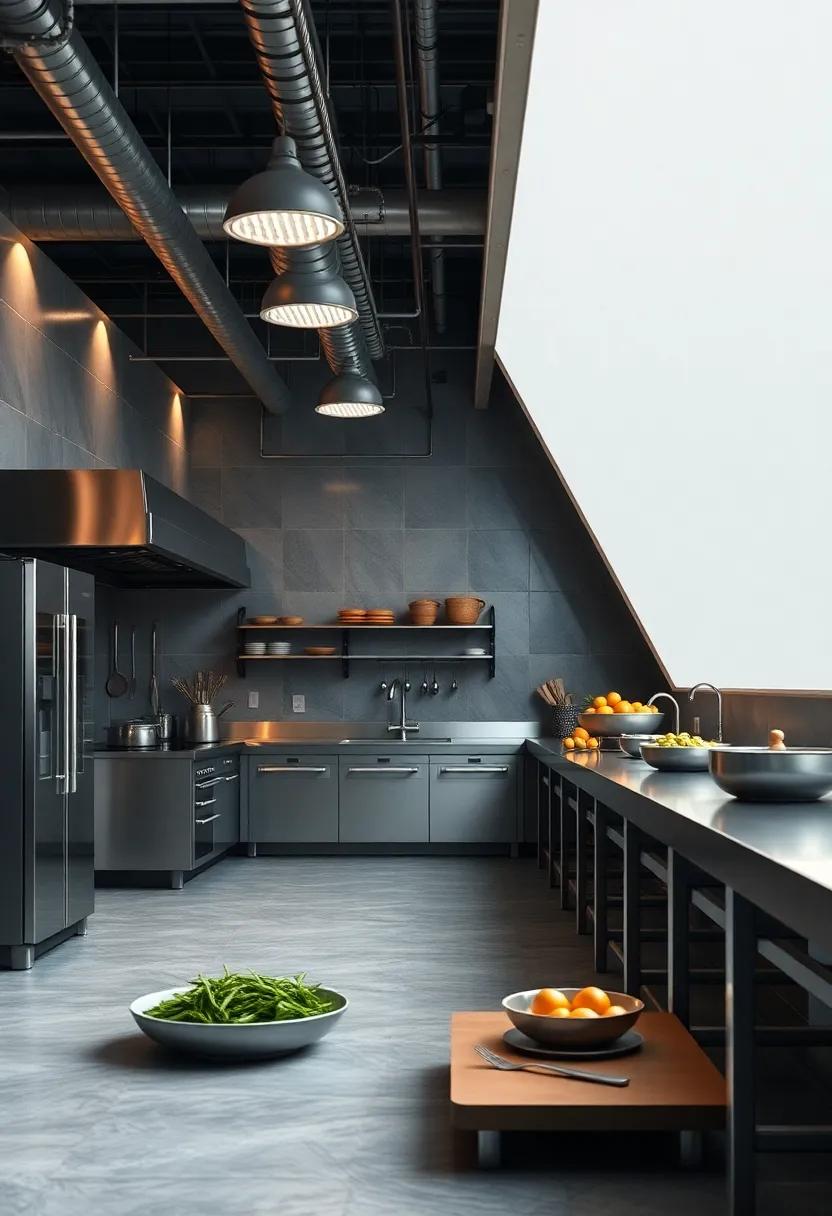
In the realm of modern industrial kitchens, establishing distinct areas for specialized cooking techniques is essential to streamline operations and enhance culinary artistry. By segmenting the kitchen into zones for grilling, baking, sautéing, and confectionery, chefs can optimize workflow and ensure each process receives the attention it deserves. This spatial organization not only aids in maintaining the integrity of flavors but also allows culinary professionals to showcase their skills in a focused environment. key components of each zone may include:
- Grill Zone: High-capacity grills with proper ventilation.
- Baking Station: Equipped with ovens,proofers,and ample counter space.
- Prep Area: Designated surfaces for ingredient readiness and marination.
- Sauté Zone: Stovetops with easy-to-access tools and spices.
- Pâtisserie Corner: Specialized for delicate pastries with temperature control.
Moreover, thoughtfully designed zones can facilitate teamwork and enhance dialog among kitchen staff.For optimal organization, installing a variety of equipment within each designated cooking space is crucial. Below is a simple overview that highlights recommended equipment for each zone:
| Zone | Essential Equipment |
|---|---|
| Grill Zone | flat Top Grill, charbroiler, Meat thermometer |
| Baking Station | convection Oven, Mixer, Baking Sheets |
| Prep Area | Cutting Boards, Knives, Food Processor |
| Sauté Zone | Induction Cooktop, Frying Pans, Spatulas |
| Pâtisserie Corner | Chocolate Tempering Machine, Mixer, Molds |
building a Connection Between Indoor and Outdoor Culinary Spaces
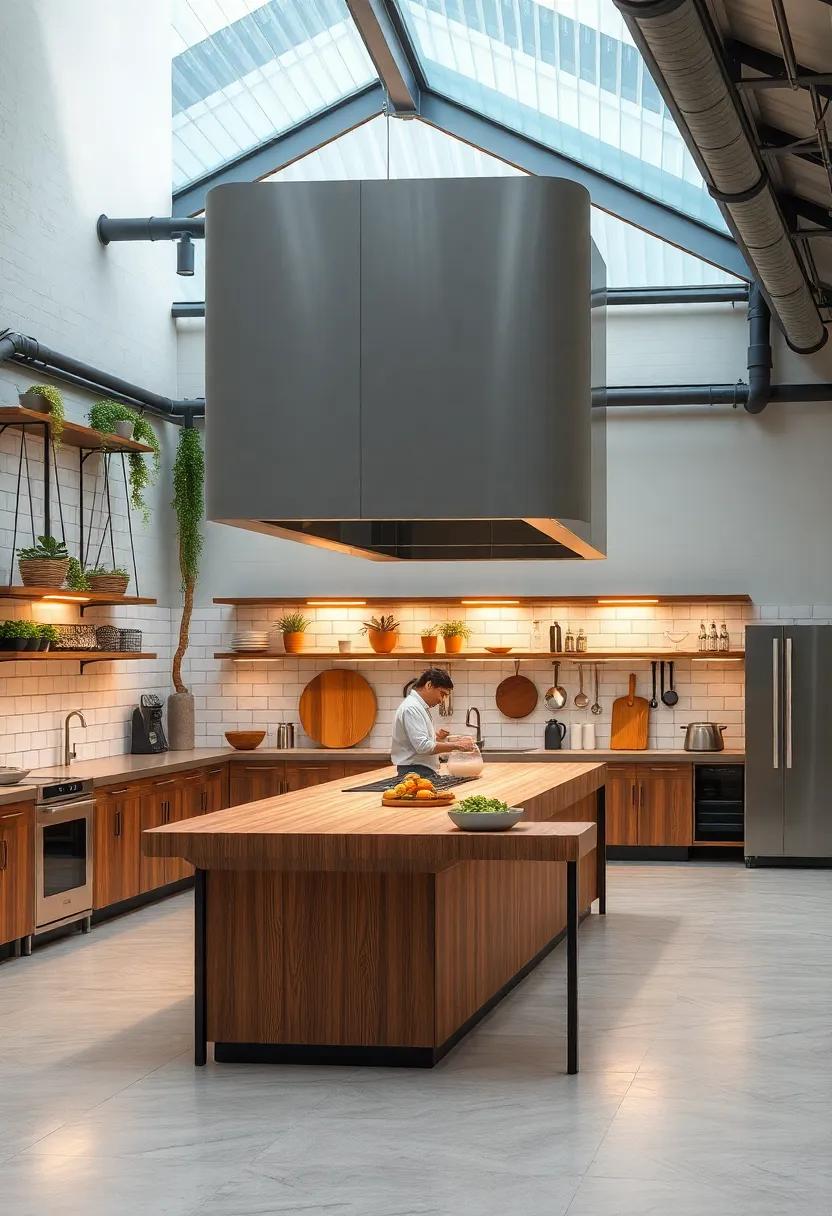
In today’s culinary landscape, the synergy between indoor and outdoor spaces is more crucial than ever. Designers are increasingly embracing the concept of open-air kitchens, allowing chefs to enjoy a seamless transition between cooking and nature. This integration not only enhances the culinary experience but also emphasizes the importance of fresh, local ingredients—a crucial factor in modern gastronomy.By incorporating features like large glass doors,retractable windows,and outdoor prep spaces,culinary professionals can foster a connection with their environment,inviting diners to witness the vibrant process of meal preparation in an inspiring setting.
To maximize functionality and creativity in both indoor and outdoor culinary environments, consider the incorporation of versatile elements such as:
- Movable Kitchen Islands: These can easily be repositioned based on the influx of diners or the desired cooking process.
- Integrated Herb Gardens: Bringing fresh flavors directly to the kitchen enhances dishes while reinforcing a sustainable approach.
- Climate-Controlled Outdoor Areas: Ensuring comfort year-round allows for an expanded kitchen during all seasons.
choosing the right materials is also an essential aspect of constructing these connections. Durable, weather-resistant surfaces can maintain functionality without sacrificing aesthetics. Below is a simple comparison of popular materials suitable for combining both spaces:
| Material | pros | Cons |
|---|---|---|
| Stainless Steel | Durable, easy to clean | Can be costly |
| wood | Warm aesthetic, good insulation | Requires maintenance |
| Concrete | Versatile, modern look | Can be heavy and hard |
Utilizing Multi-Functional Equipment for Space and Resource Efficiency
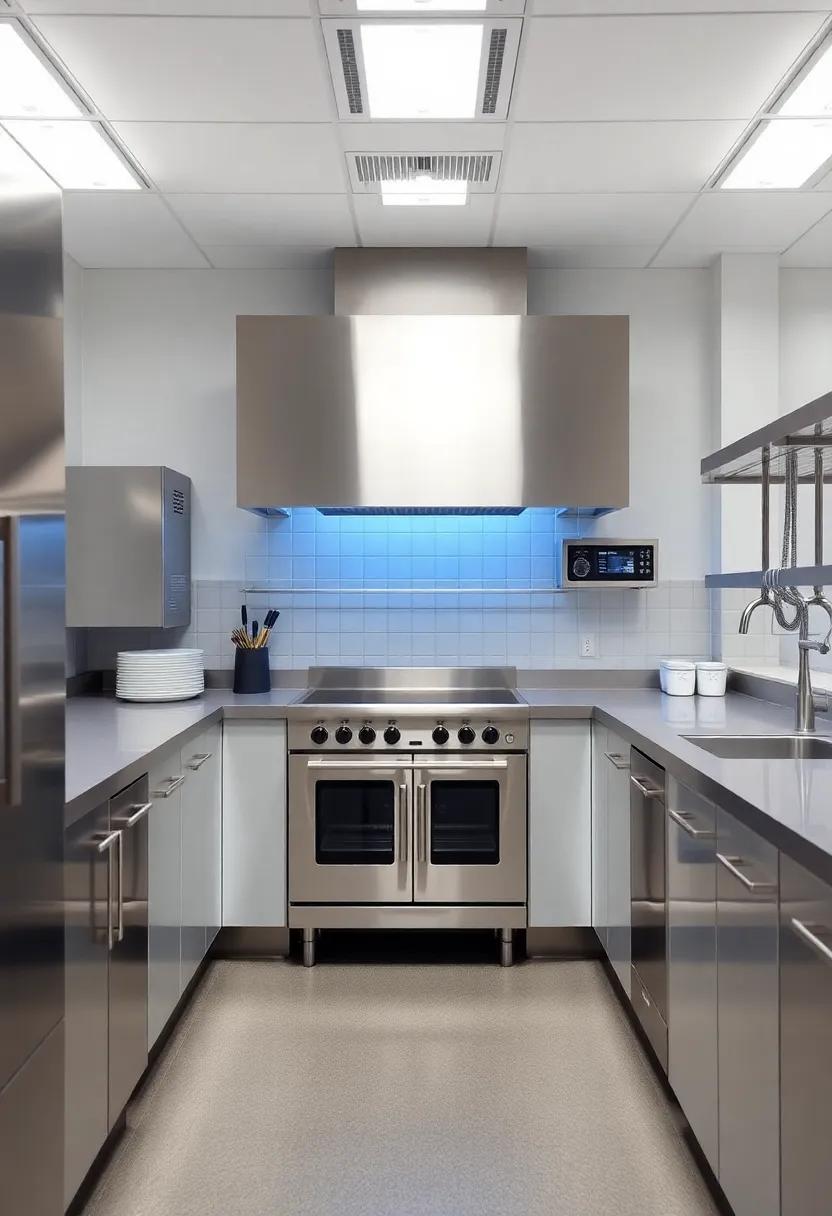
The modern industrial kitchen is evolving rapidly, and with this evolution comes the necessity of maximizing both space and resources. By integrating multi-functional equipment, chefs can streamline their workflows and create a more efficient cooking environment. As an example, a single unit that combines a convection oven, combi-steamer, and grill not only saves precious square footage but also reduces energy consumption. This versatility allows culinary spaces to be designed with an emphasis on flexibility, enabling kitchen staff to adapt to varying menu demands without compromising quality or speed.
When considering the implementation of these innovative tools, it’s essential to evaluate their potential benefits carefully. A few key advantages of utilizing such equipment include:
- Space Optimization: Less equipment means more floor space available for movement and service.
- Cost Efficiency: Reduced utility bills due to lower energy and water usage.
- Enhanced Workflow: Combined functionalities can cut down on prep time and transition between cooking tasks.
To further illustrate the impact of multi-functional equipment on kitchen efficiency, here is a simple comparison table of traditional versus modern setups:
| Aspect | Traditional Setup | modern Multi-Functional Setup |
|---|---|---|
| Footprint | Larger space required | Compact design |
| Energy Usage | Higher costs | Lower consumption |
| Staff Efficiency | Increased workload | Streamlined operations |
Incorporating Art and Culture in Culinary Environment Design
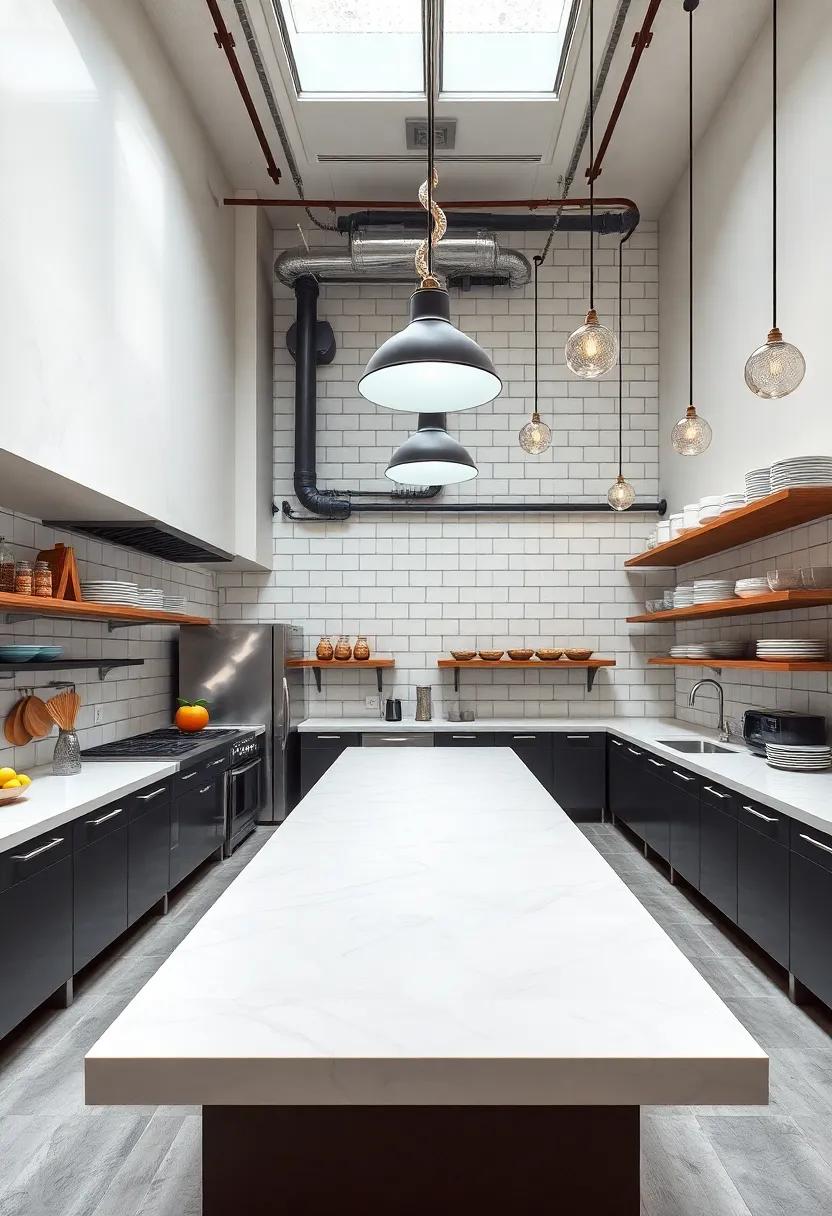
Integrating art and culture into the design of culinary spaces fosters a vibrant atmosphere that resonates with the community and enhances the dining experience. By melding local traditions with contemporary design, kitchens can transcend mere functionality, becoming a canvas that tells the story of the community’s heritage. Textures,colors,and patterns derived from cultural references can be utilized in various ways,creating an immersive environment that captivates diners. Consider employing artistic tile designs reminiscent of traditional craftsmanship or incorporating local artwork that reflects the region’s identity, ensuring the space feels authentic and inviting.
Moreover, engaging with local artists and artisans not only supports the community but enhances the culinary space’s uniqueness. here are some strategies to consider:
- Feature rotating exhibitions of local art that celebrate seasonal themes.
- craft distinctive furniture and fixtures from regional materials.
- host workshops or events that connect culinary arts with visual arts, like painting classes paired with a gourmet dinner.
Utilizing these elements not only enriches the atmosphere but also creates an engaging backdrop for culinary creativity, allowing chefs and guests to connect over shared inspirations. This approach cultivates a sense of pride and ownership within the community, ultimately rejuvenating the culinary landscape.
Exploring the Benefits of Collaborative and Communal Cooking Areas
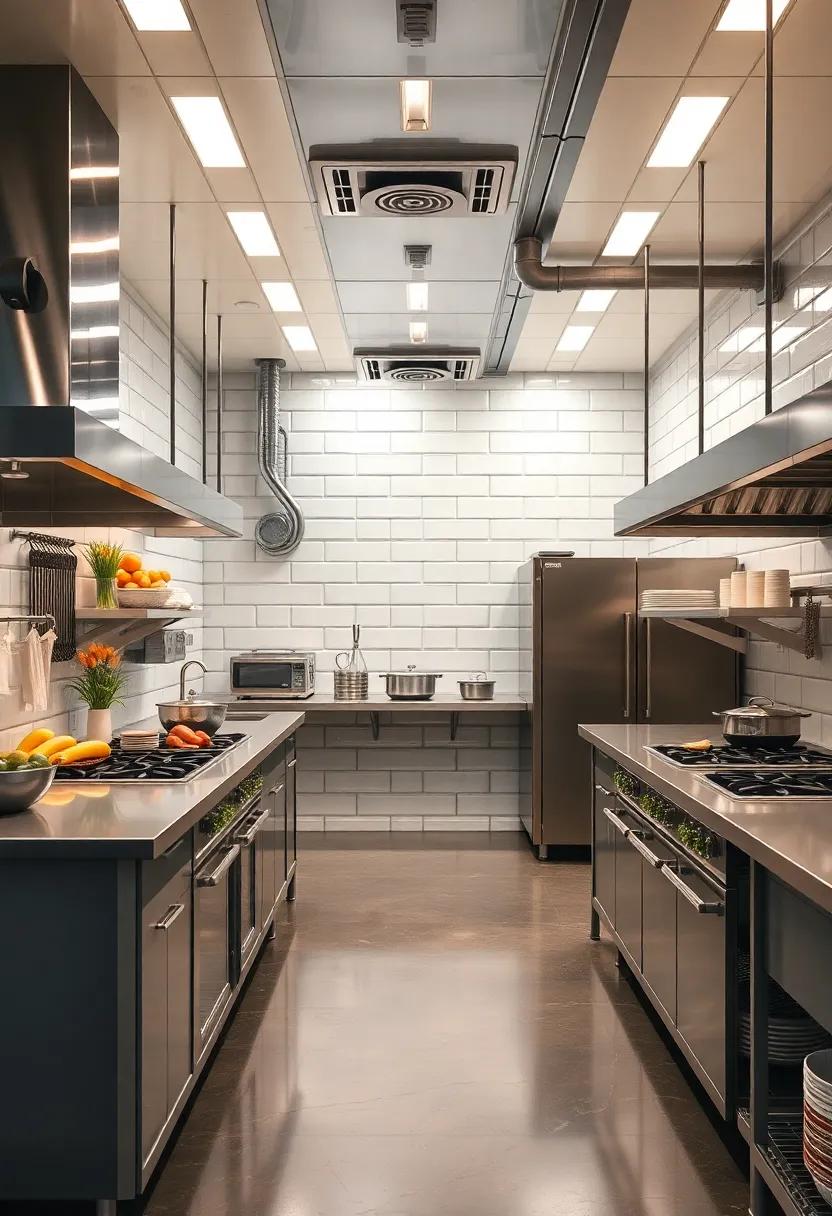
In the heart of modern culinary spaces, collaborative cooking areas are redefining the way chefs, home cooks, and food enthusiasts engage with food preparation. These communal kitchens foster a sense of community, where individuals from diverse backgrounds come together to share not just recipes, but also ideas, techniques, and cultures. The benefits are manifold:
- Enhanced Creativity: Working alongside others can spark inspiration and innovative culinary techniques.
- Resource Sharing: Participants can pool ingredients and tools, reducing waste and promoting sustainability.
- Skill development: Learning from peers fosters an environment of mentorship and growth, enhancing individual cooking skills.
- Cultural Exchange: Cooking together allows for the sharing of culinary traditions and heritage,enriching the gastronomic experience.
Moreover, collaborative cooking spaces can also cater to varied dietary needs, making them inclusive environments for everyone. A thoughtfully designed communal kitchen can incorporate features that promote efficiency and accessibility:
| Feature | Description |
|---|---|
| Flexible Workstations | Adaptable counter space for group participation. |
| Shared Storage | Community pantry for easy access to ingredients. |
| Team Cooking Tools | A variety of tools that cater to different cuisines. |
| Educational Workshops | Regular classes to encourage continual learning. |
Enhancing Atmosphere With Ambient Lighting Strategies
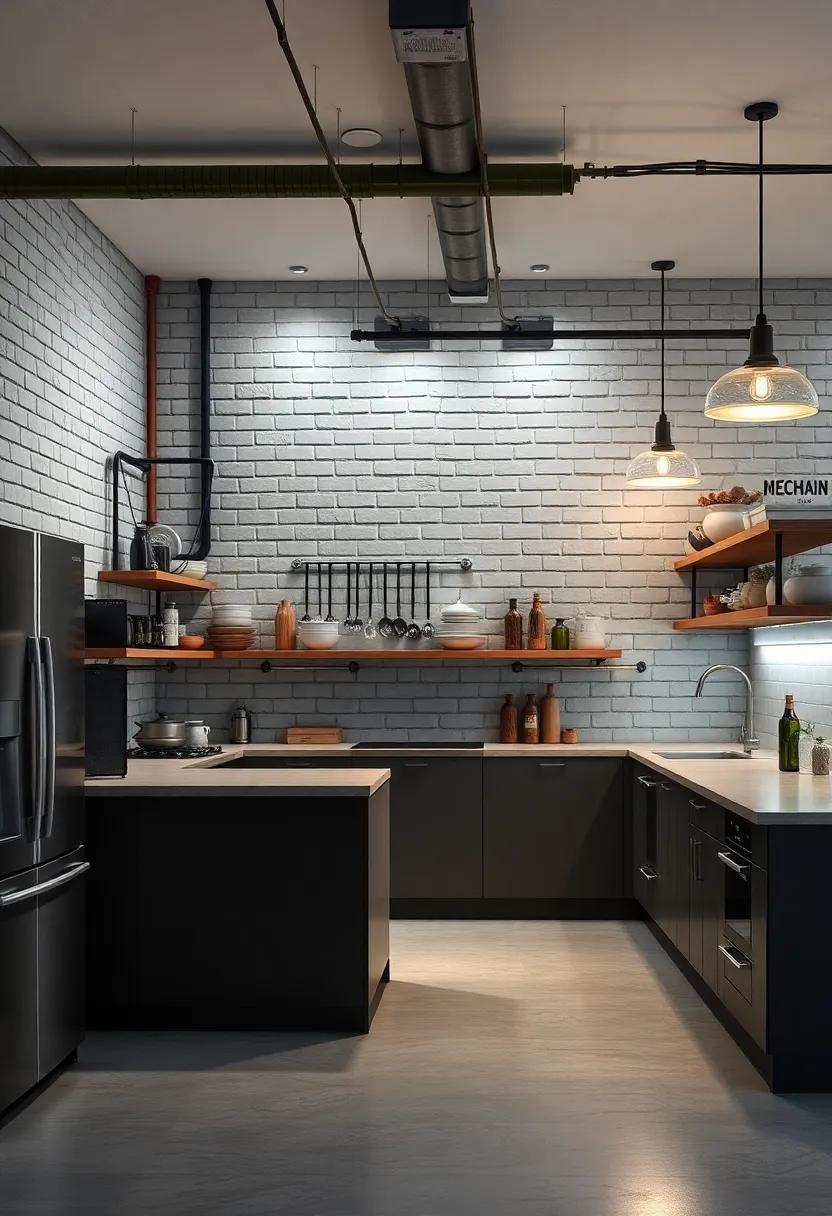
Creating a warm and inviting environment in culinary spaces goes beyond just practical design; it heavily relies on the strategic use of lighting. By incorporating various layers of ambient lighting, chefs and restaurateurs can transform a kitchen into a welcoming hub that delights both the eyes and the senses. Key strategies to consider include:
- Dimensionality: Use pendant lights and wall sconces to create a mix of heights,adding texture and depth.
- Warm Tones: Opt for bulbs that emit soft, warm colors to create a cozy atmosphere, ideal for both cooking and dining.
- Zoning: Implement task lighting in specific areas like the prep station while maintaining softer ambient light in more communal spaces.
Furthermore,integrating smart lighting can enhance both functionality and mood. With adjustable settings, cooks can shift the ambiance as needed, from bright, focused light during meal preparation to softer lighting for personal moments or gatherings.Consider these options when designing your culinary space:
| Lighting Type | Benefits |
|---|---|
| Pendant Lights | Visual interest and focused illumination |
| LED Strips | Energy-efficient and versatile |
| Smart LEDs | Customizable ambiance and remote control |
promoting cleanliness and Hygiene Through Smart Layouts
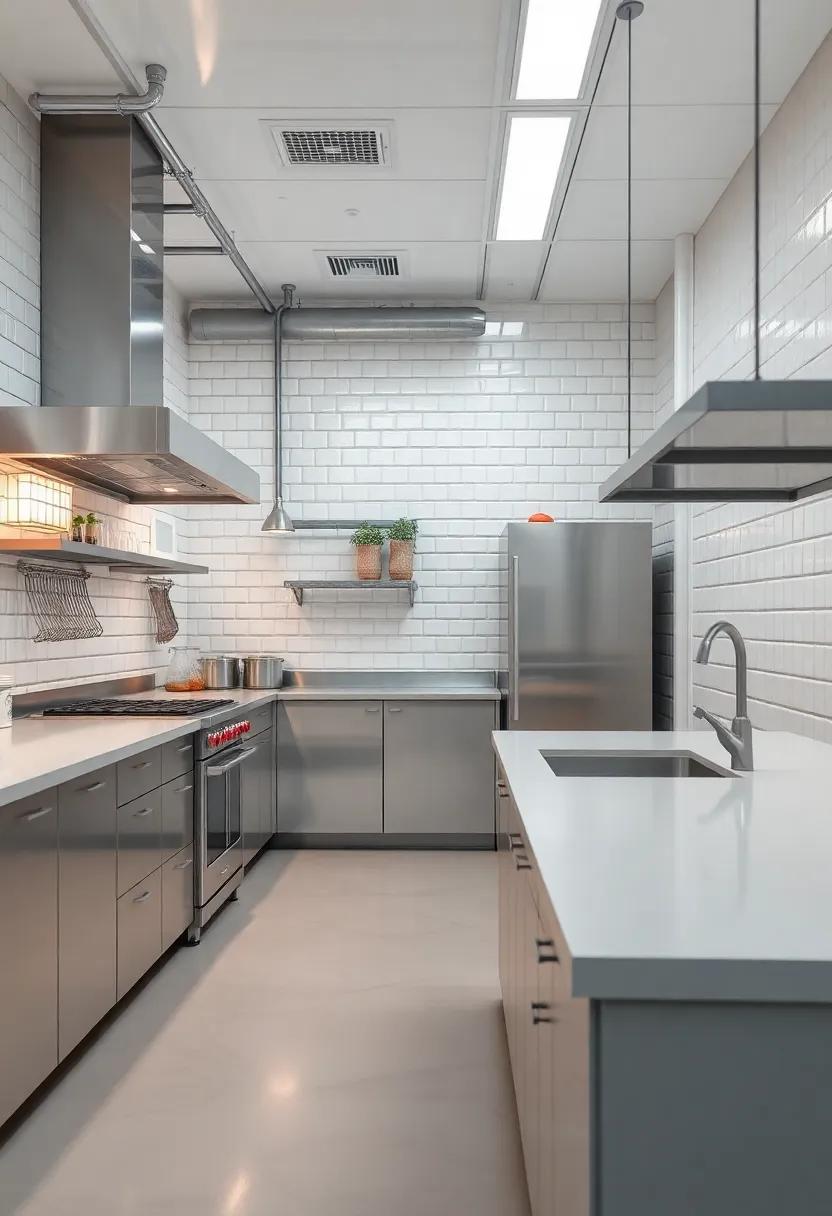
In the modern culinary landscape, smart layouts are not merely a design choice but a necessity for promoting cleanliness and hygiene. Thoughtfully designed kitchens facilitate efficient workflow while minimizing the risk of cross-contamination. By strategically arranging workstations and ensuring ample space between cooking zones, the risk of spills or accidents can be significantly reduced. This layout not only enhances safety but also allows for easier and more effective cleaning processes, creating a hygiene-focused environment where food safety becomes integral to the kitchen culture.
Key elements incorporated into these layouts include:
- Dedicated zones: separating raw food preparation areas from cooked food handling spaces ensures that contaminants are kept at bay.
- Ergonomic designs: Counter heights and equipment placements are optimized for comfort, reducing the likelihood of accidents during food preparation.
- Easy access to cleaning supplies: Storage solutions for sanitizing agents and tools close to workstations make it convenient to maintain cleanliness throughout the cooking process.
To visualize the impact of smart layouts on hygiene, consider the following table illustrating the benefits:
| Design Feature | Benefit |
|---|---|
| Ample space between stations | Reduces clutter and enhances airflow |
| Optimized kitchen flow | Minimizes movement and time spent between tasks |
| Separate cleaning areas | ensures effective sanitation without contamination |
Curating Culinary Tool Collections For Functional Beauty
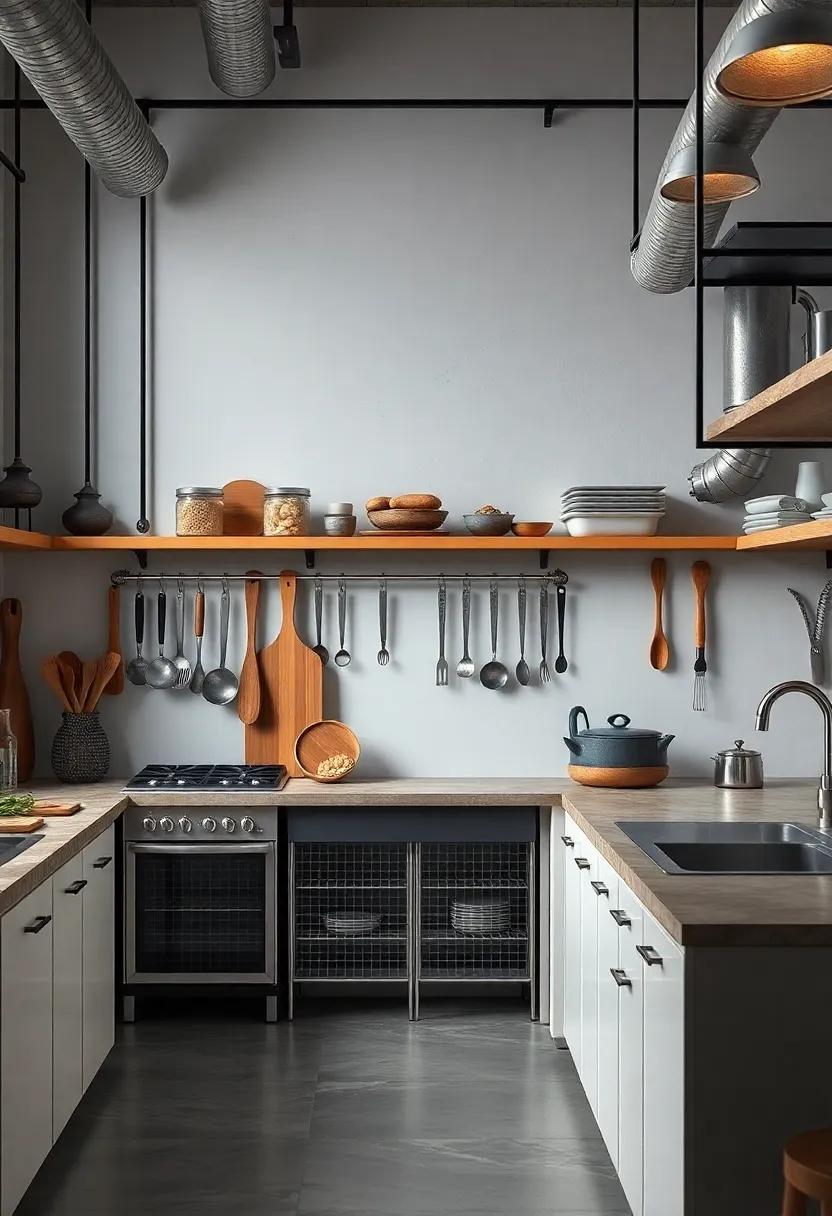
In the pursuit of modern industrial kitchen design,the intersection of functionality and aesthetics is vital. Curating a collection of culinary tools that harmonizes both aspects can elevate a kitchen from mere practicality to a true sanctuary for creativity. When selecting these tools, consider incorporating elements that not only perform efficiently but also contribute to the overall visual appeal.A blend of materials such as stainless steel, bamboo, and vibrant ceramics can create an eclectic yet cohesive look. Essential tools can include:
- Chef’s knives – A must-have for any culinary artist, combining deft design and sharp precision.
- Cast iron skillets - Timeless pieces that offer both beauty and unmatched heat retention.
- Handcrafted cutting boards – These not only protect your surfaces but also serve as stunning kitchen décor.
- Herb and spice containers – Stylish organizers that promote ease of access while enhancing countertop aesthetics.
Equally vital is the organization within the culinary space. Utilizing open shelving, magnetic strips, and customizable drawer inserts allows culinary tools to be displayed prominently while remaining accessible. This aesthetic can be further enhanced by coordinating colors and designs across your collection. Consider providing a space for seasonal tools, enabling an ever-evolving kitchen environment. The following table outlines essential tools, their primary functions, and recommended materials:
| Tool | Function | Recommended Material |
|---|---|---|
| Whisk | Mixing and aerating | Stainless Steel |
| Peeler | Removing skin from fruits and vegetables | Bamboo Handle |
| Colander | Draining liquids | Plastic or Metal |
| Pizza Stone | Even heat distribution for baking | Natural Stone |
The Future of Culinary Spaces in Urban Living Environments
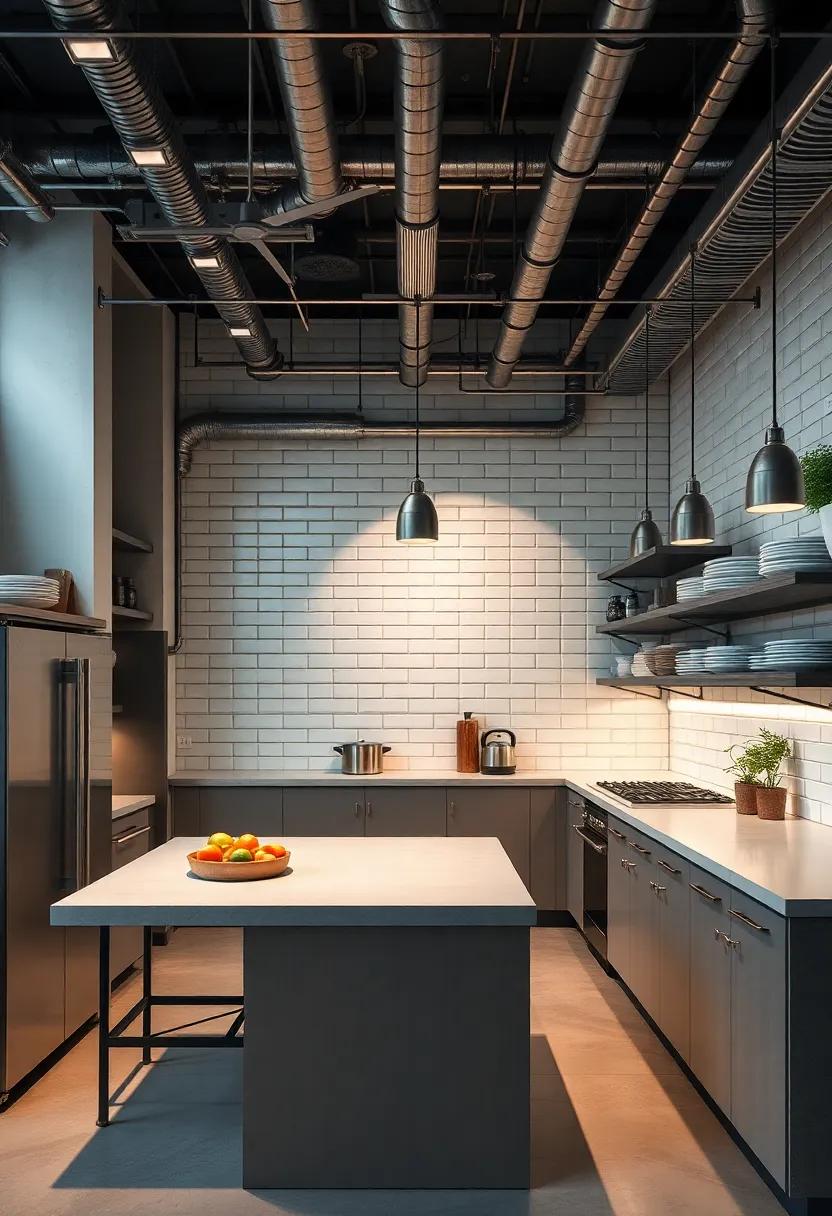
As urban living evolves, the culinary spaces within our cities are set for a significant transformation. No longer mere kitchens, these spaces are becoming multifunctional hubs where creativity and community intersect. The integration of technology into the design of these kitchens is essential,enabling seamless cooking experiences with smart appliances,energy-efficient systems,and real-time meal tracking applications. Moreover, sustainability is at the forefront, inspiring the inclusion of vertical gardens, composting stations, and energy-neutral utilities, which all contribute to reducing the environmental footprint of urban cooking.
Future culinary spaces will be designed to foster collaboration among diverse culinary enthusiasts, pushing the boundaries of traditional dining.These environments will feature flexible layouts, catering to large community gatherings as well as intimate cooking workshops. The essence of communal dining will be echoed in the design, with open-plan kitchens promoting accessibility and conversation. Additional elements to consider in the design of urban culinary spaces include:
- Modular furniture that can adapt to various group sizes and activities.
- Innovative storage solutions to maximize efficiency in compact settings.
- Interactive stations for mastering different culinary techniques.
| Key Features | Description |
|---|---|
| Sustainable Materials | Using recycled and eco-friendly products in construction and decor. |
| Smart Technology | Integrating IoT devices for kitchen management and safety. |
| community space | Areas designed for classes, demos, and social events. |
Crafting a Narrative Through Kitchen Decor and Personalization
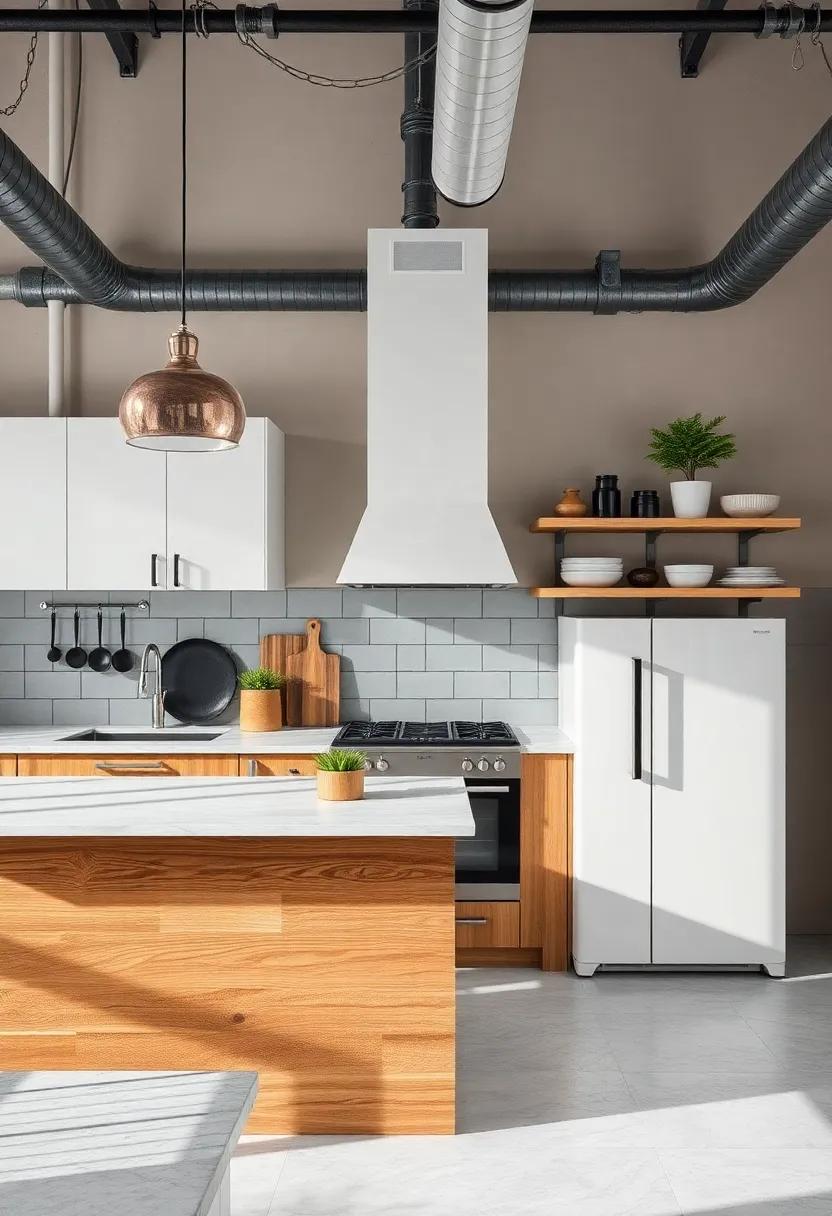
Transforming a kitchen into a narrative-rich space requires more than just sleek appliances and efficient layouts; it’s about imbuing the area with personal stories and aesthetic cohesion. Textures play a critical role in this storytelling journey. From reclaimed wood shelves to exposed metal finishes, each element contributes to a sense of history and personality. Functional art pieces, such as handcrafted utensils or bespoke dishware, can bring a unique touch while also serving practical purposes. Consider displaying vintage cookbooks or family heirloom dishes in open shelving, creating a visual dialogue that invites exploration and reminiscence.
Color palettes also contribute to the richness of the culinary narrative.Bold, industrial hues paired with softer, organic tones can create a striking contrast that evokes emotion and warmth. Accent walls adorned with murals or clever chalkboard paint invite culinary creativity and make the kitchen not just a space for cooking, but a canvas for expression. Use personalized touches such as framed photographs or custom art prints that resonate with your family’s heritage. These thoughtful elements transform your kitchen from merely a place of function into a celebratory space that encapsulates the essence of home and culinary passion.
Closing Remarks
As we draw the curtains on our exploration of modern industrial kitchens, it’s clear that these culinary spaces are more than mere workplaces; they are vibrant ecosystems where creativity meets efficiency. The evolution of these kitchens reflects our broader societal shifts toward innovation, sustainability, and community. By revamping culinary spaces, we not only enhance functionality but also cultivate an environment that inspires chefs and food enthusiasts alike.
In embracing the essentials of modern design—versatility, technology integration, and a focus on sustainability—we position ourselves at the forefront of a culinary revolution. As the demands of foodservice continue to evolve,so too must our approaches to kitchen design,ensuring that these spaces remain not just functional but also inspirational.
Whether you’re a professional chef seeking to elevate your practice, a restaurateur envisioning your next concept, or simply a lover of good food, understanding the dynamics of industrial kitchens invites a deeper recognition of the art of cooking. As we forge ahead, let’s continue to innovate, collaborate, and celebrate the kitchens that fuel our love for culinary arts. Here’s to the future of cooking, where every meal is not just prepared, but crafted with intention, passion, and creativity.
